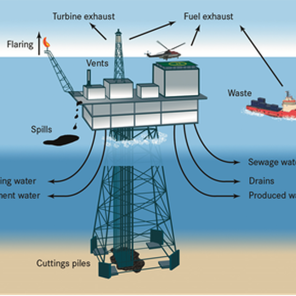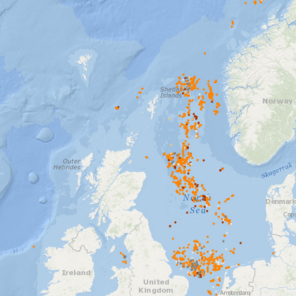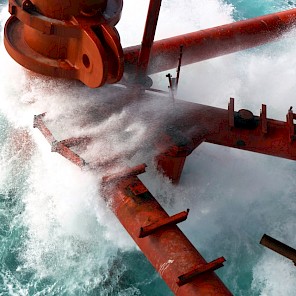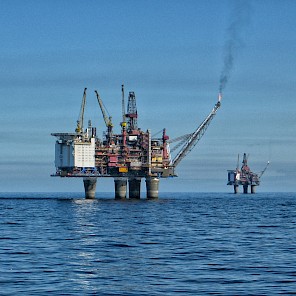| | As part of OSPAR's Quality Status Report 2023 we have just published a comprehensive assessment of impacts of the offshore oil and gas industry on the marine environment. It shows that pressures from offshore oil and gas activities are greatest in the North Sea and followed by Arctic Waters and the Celtic Seas where offshore oil and gas activities have developed in the OSPAR area over the past 50 years. Environmental impacts can occur throughout the lifecycle of these activities, exploration, production and decommissioning. Impact can arise from discharge of produced water, oil, chemicals, drilling muds and cuttings, physical impact from the placement of installations and pipelines, noise from seismic surveys and drilling, light emitted from the installations and atmospheric emissions.
The assessment for the period 2009 - 2019 shows that there has been a measurable decrease in emissions and discharges from the offshore oil and gas industry. Activities that were once widespread for example from the discharge of oil-based fluids, have now ceased and the level of contamination has decreased over most of the North-East Atlantic.
To accompany the assessment we have just published 3 fact sheets focusing on decommissioning, the use of and discharge chemicals, and on produced water. We hope you find these interesting. |  | | Assessment of impacts of the offshore oil and gas industry on the marine environment | |  READ MORE
READ MORE |
| |  | | The use of and discharge chemicals in the offshore oil and gas industry in the North-East Atlantic | |  READ MORE
READ MORE |
|
|  | | Produced water discharges from offshore oil and gas installations 2009-2019 | |  READ MORE
READ MORE |
| |  | | Decommissioning of disused offshore oil and gas installations in the North-East Atlantic | |  READ MORE
READ MORE |
|
|
| | |
|